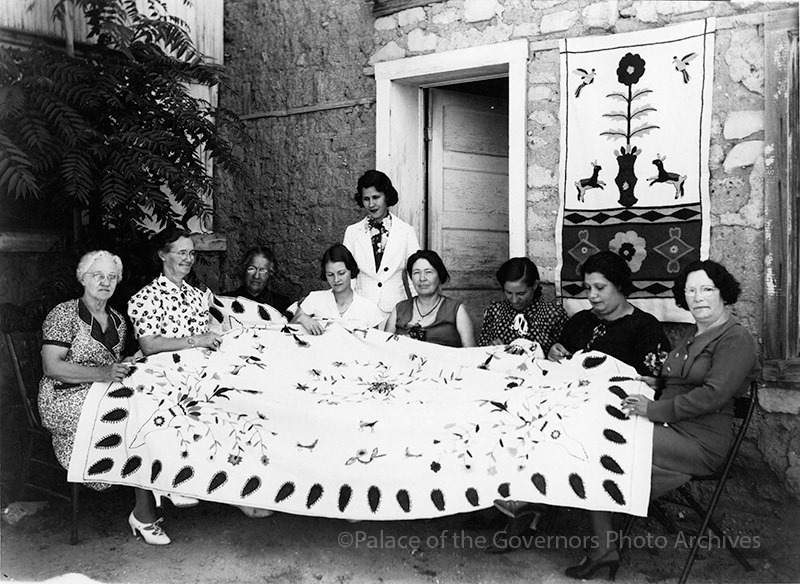
Stella Garcia and her colcha embroidery class, Federal Art Project (WPA), Melrose, New Mexico. (Estella Garciá standing. Fourth artist from the left identified as Rita Rodríguez Chávez)
Date: circa 1936
POG Negative Number 090204
(SIDE 1) Estella García taught colcha embroidery at Melrose, New Mexico, for the Federal Arts Program in the 1930s. Anglo and Hispana women in Garcia’s class collaborated to design and produce embroidered theater curtains, wall hangings, and seat coverings for institutions across the state including the Albuquerque Little Theatre. Garcia is one of the few Hispanic women artists recorded in FAP documents. Unfortunately, few examples of her work remain. (SIDE 2) Under the umbrella of the WPA, the National Youth Administration, and the Federal Arts Program, instructors and students were recruited to work in community-based art centers that produced fabric arts, including weaving, colcha embroidery, and lace-making. While the artistic creativity of these mostly unrecognized women was considered “women’s work for home use” by WPA administrators, this now popular New Mexican art form has been revitalized.
Roadside Marker Location: Curry County, US Hwy 60/84, Mile Marker 336.18
You can view a county by county list of the Historic Women Mile Markers in this pdf.
You can view a map of the Historic Women Mile Markers at www.nmhistoricwomen.org
March is Women’s History Month. During this month we’ll be highlighting some of the women featured on New Mexico’s Historic Women Roadside Markers. Text provided by our colleagues at New Mexico Historic Preservation Division
